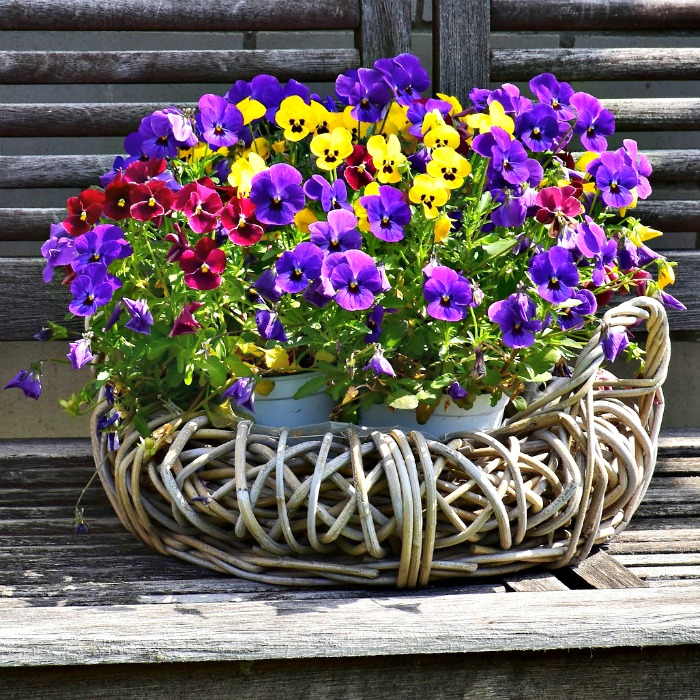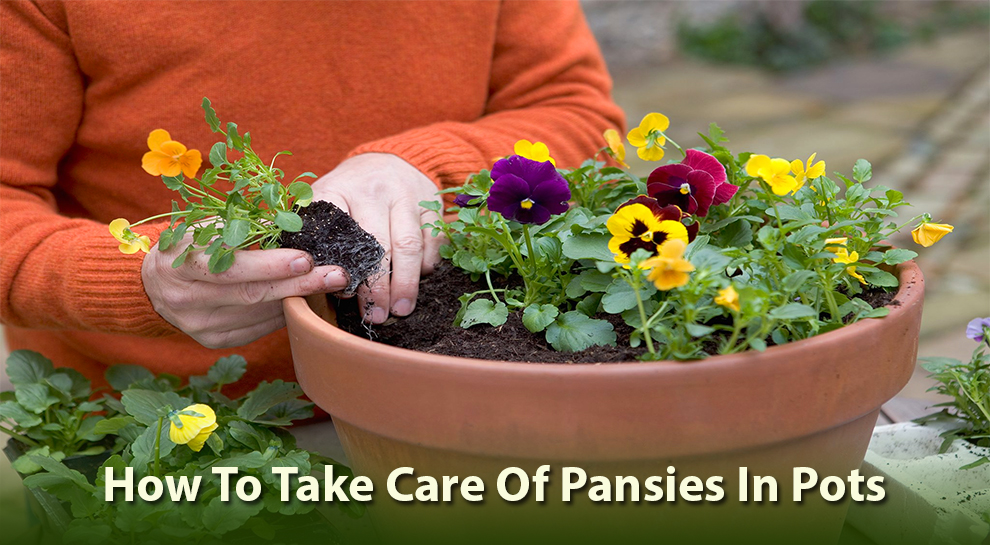Choosing the Right Pot and Soil for Pansies
When it comes to the care of pansies in pots, selecting the appropriate pot and soil is crucial for their growth and development. Pansies thrive in well-draining soil with a slightly acidic to neutral pH level, typically between 5.5 and 6.5. High-quality potting soil, specifically designed for container gardening, is recommended for pansies in pots. This type of soil provides adequate drainage and aeration, ensuring that the roots receive sufficient oxygen and water.
Drainage is an essential factor to consider when choosing a pot for pansies. Pansies do not tolerate waterlogged conditions, which can lead to root rot and other diseases. Select pots with drainage holes at the bottom to allow excess water to escape. Ceramic, terracotta, and glazed pots are suitable options for pansies, as they provide good drainage and are porous, allowing the soil to dry out between watering sessions.
The size of the pot also plays a significant role in the care of pansies in pots. A pot that is too small may restrict root growth and lead to overwatering, while a pot that is too large may result in under-watering. A container with a diameter of 6 to 12 inches is ideal for most pansy varieties. When in doubt, opt for a slightly larger pot, as pansies have a relatively shallow root system.
How to Plant Pansies in Pots
Planting pansies in pots is a simple process that can yield stunning results. To begin, choose a suitable pot with adequate drainage holes and the appropriate size. Fill the pot partially with high-quality potting soil, leaving a few inches of space at the top. Dig a hole in the soil that is deep and wide enough to accommodate the pansy’s root ball. The top of the root ball should be level with the soil surface. Remove the pansy from its nursery pot gently and place it in the prepared hole. Backfill around the root ball with additional potting soil, ensuring that it is firm but not compacted. Space multiple pansies at least 4 to 6 inches apart, depending on their mature size. Water the pansies thoroughly after planting, ensuring that the soil is evenly moist but not waterlogged. Allow the excess water to drain completely from the pot.
When planting pansies in pots, consider the ideal time to do so. The best time to plant pansies in pots is in the early spring or fall, depending on your local climate. Spring plantings should be done after the last frost date, while fall plantings should be done 6 to 8 weeks before the first expected frost. Planting pansies during these times allows them to establish themselves before extreme temperatures arrive, increasing their chances of thriving in pots.
Watering and Fertilizing Pansies in Pots
Proper watering and fertilization are essential components of the care of pansies in pots. Pansies require consistent moisture to thrive, but overwatering can lead to root rot and other issues. Aim to water pansies in pots when the top inch of soil becomes dry. Use a watering can or a gentle hose setting to avoid damaging the delicate flowers. Ensure that the water drains freely from the pot, and discard any excess water that collects in saucers or trays.
Fertilizing pansies in pots is crucial for promoting healthy growth and abundant blooms. Choose a balanced, water-soluble fertilizer with a ratio like 10-10-10 or 20-20-20. Dilute the fertilizer to half the recommended strength and apply it every 2 to 4 weeks, following the package instructions. This regular feeding schedule will provide pansies with the necessary nutrients to flourish in their container environment.
Protecting Pansies from Pests and Diseases
A crucial aspect of the care of pansies in pots is safeguarding them from pests and diseases. Common pests that affect pansies include aphids, spider mites, slugs, and snails. To minimize the risk of pest infestations, ensure proper watering and spacing, keeping the foliage dry when possible. Regularly inspect pansies for signs of pests, such as discoloration, sticky residue, or small holes in the leaves. If pests are detected, consider using insecticidal soap or neem oil to treat the affected plants, following the product instructions carefully.
Diseases that can impact pansies in pots include powdery mildew, botrytis, and downy mildew. These diseases thrive in damp, humid conditions, so proper watering techniques and air circulation are essential for prevention. To reduce the likelihood of disease, avoid overhead watering and ensure that pots have adequate drainage. Remove any dead or diseased leaves promptly and dispose of them properly to prevent the spread of disease. If a disease is detected, consider using a fungicide specifically labeled for use on pansies, following the product instructions carefully.
Maintaining Pansies in Pots During Different Seasons
Caring for pansies in pots throughout the year requires adjustments to watering, fertilizing, and protection from extreme temperatures. During the growing season, typically spring and fall, water pansies consistently, allowing the top inch of soil to dry out between waterings. Fertilize every 2 to 4 weeks with a balanced, water-soluble fertilizer diluted to half strength. Monitor pansies for signs of pests and diseases, and address any issues promptly.
As the weather cools, reduce watering to prevent root rot, and protect pansies from frost by covering the pots with a cloth or moving them to a sheltered location. In hot summer climates, move pansies to a partially shaded area to prevent heat stress. Discontinue fertilizing during the dormant winter season, and water sparingly to maintain minimal moisture in the soil.
Seasonal challenges for pansies in pots include extreme temperatures, both hot and cold. In areas with harsh winters, consider using insulation materials, such as bubble wrap or a specially designed plant cover, to protect pansies from freezing temperatures. In hot summer climates, provide shade and additional water to help pansies survive the heat. By making these seasonal adjustments, you can ensure that your pansies thrive in their container environment year-round.
Reviving Fading Pansies in Pots
Pansies in pots may start to fade or lose their vibrancy due to various factors, including insufficient water, light, or nutrients. To revive fading pansies, first, assess the growing conditions and address any issues that may be contributing to their decline.
If pansies are not receiving enough water, increase their watering frequency, ensuring that the soil remains consistently moist but not waterlogged. In hot, dry weather, pansies may require daily watering. Check the soil moisture level regularly and adjust watering accordingly.
Light is another critical factor in pansy health. Pansies prefer partial shade, especially in hot climates. If your pansies are receiving too much direct sunlight, move the pots to a location with dappled shade or filtered sunlight. This adjustment can help prevent heat stress and improve the overall health of the plants.
Inadequate nutrients can also contribute to fading pansies. Boost the nutrient content of the soil by applying a balanced, water-soluble fertilizer. Dilute the fertilizer to half the recommended strength and apply it every 2 to 4 weeks, following the product instructions. This additional feeding can help revive pansies and promote new growth.
In some cases, pansies may fade due to natural factors, such as the end of their blooming cycle. To encourage continued blooming, deadhead spent flowers regularly, removing them at the base of the stem. This practice promotes new growth and can help extend the life of pansies in pots.
Extending the Life of Pansies in Pots
To extend the life of pansies in pots, several strategies can be employed, including deadheading, pinching, and dividing. These methods promote healthy growth, encourage new blooms, and help maintain the overall appearance of the plants.
Deadheading
Deadheading is the process of removing spent flowers from the plant. This practice encourages new growth and prevents the plant from allocating energy to seed production. To deadhead pansies, use a pair of sharp scissors or pruning shears to snip off the spent flowers at the base of the stem. Deadhead regularly, ideally every 2 to 3 days, to maintain a tidy appearance and promote continuous blooming.
Pinching
Pinching is a technique used to encourage bushier growth and more abundant blooms. To pinch pansies, use your fingers or a pair of sharp scissors to remove the tips of the stems, just above a leaf node. This action stimulates the plant to produce new branches, resulting in a fuller, more compact shape. Pinching can be done every 2 to 4 weeks, depending on the growth rate of the pansies.
Dividing
Dividing is a method used to rejuvenate overgrown pansies and promote new growth. To divide pansies, carefully remove the plant from its pot and gently separate the roots into smaller clumps. Replant the clumps in fresh, well-draining soil, spacing them appropriately for the pot size. Divide pansies every 2 to 3 years, or when they become overcrowded and stop blooming as profusely.
By employing these strategies, you can extend the life of pansies in pots, ensuring vibrant, colorful displays for an extended period. Regular maintenance, such as deadheading and pinching, helps maintain the appearance of the plants, while dividing rejuvenates them and promotes healthy growth.
Showcasing Pansies in Pots: Design Ideas and Inspiration
Pansies in pots can add a touch of charm and color to any space, both indoors and outdoors. With a little creativity, you can create stunning displays that showcase the beauty of these versatile flowers. Here are some ideas and inspiration for designing unique pansy pot displays:
Colorful Combinations
Pansies come in a wide range of colors, from deep purples and blues to bright yellows, pinks, and whites. Combine different colors in a single pot to create a vibrant, eye-catching display. For example, pair deep purple pansies with bright yellow ones for a dramatic contrast, or mix soft pinks and whites for a more subtle, romantic look.
Table Centerpieces
Pansies in pots make beautiful table centerpieces for both formal and casual gatherings. Choose a pot that complements your table setting and arrange a few pansies in the pot for a simple, elegant display. For added interest, consider incorporating other small plants, such as succulents or ivy, into the arrangement.
Outdoor Living Spaces
Incorporate pansies into your outdoor living spaces to add color and charm. Place pots of pansies on patios, balconies, or decks, or use them to line walkways or accent garden beds. Consider using pots of varying sizes and shapes to create a cohesive, yet dynamic display.
Seasonal Decor
Pansies are often associated with spring, but they can be enjoyed year-round with a little creativity. In the fall, combine pansies with ornamental kale or mums for a seasonal display. In the winter, place pots of pansies near windows or doors to add a pop of color during the colder months. In the summer, pair pansies with other heat-tolerant plants, such as petunias or marigolds, for a vibrant, long-lasting display.
By incorporating pansies into your pot displays, you can create beautiful, colorful arrangements that add charm and character to any space. Experiment with different color combinations, arrangements, and plant pairings to create your own unique pansy pot displays.







